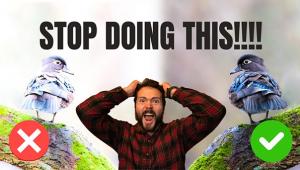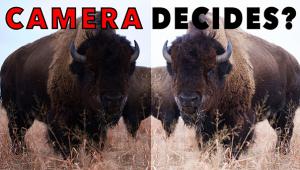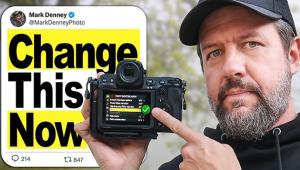5 Fundamentals of Bird Photography From a Top Expert (VIDEO)

Are you interested in taking a crack at bird photography but don't know where to start? Or perhaps you've been at this for a while and the images you've made just don't hit the mark. In either case, the basic tutorial below will set you on the path to success.
Instructor Gayle Boyer is an awarding winning pro, prolific author, and a graduate of the Seattle Audubon Master Bird program. In this six-minute primer you'll learn five fundamental techniques for capturing attention-grabbing photos of our feathered friends.
Boyer kicks off the lesson with this: "These are the most important rules to follow, and if you do these five things you'll be well on your way to having exceptional quality photos." Once you're mastered this handful of tips you can elevate you work further by reading Boyer's book that's mentioned in the video.

It's unlikely that you're familiar with Rule #1 which is to point your shadow at the bird. Boyer has been preaching this approach for years, and here's why: "If you point your shadow at the bird you'll have nice, even light on the subject with no dark shadows, and you'll have a wonderful image without excessive contrast."
Boyer's second tip is one that experienced shooters use for all sorts of wildlife photos and human portraits as well; namely "focus on the eyes"—even if other parts of the bird aren't critically sharp. That's because "as humans we connect with a bird, or any animal, through the eyes."
Rule #3 is all about vantage point and camera position as Boyer demonstrates the powerful effect that's created when you get eye-level with a bird. You'll see how the emotional impact of a photo changes as you experiment with perspective. Boyer puts it like this: "We want to show the intimacy of the bird's world and position ourselves as equals—rather than looking up or down at it."

Boyer's last two tips are equally helpful and, despite their simplicity, will help capture much more impactful bird photos the next time you give this popular genre a try. So head out in the field, follow the rules, and you'll be pleasantly surprised by what you're able to create.
Boyer's instructional Tube channel is a great source of information as your skills continue to grow.
On a related topic, check out the earlier tutorial we posted with another accomplished pro who demonstrates a powerful in-camera technique for shooting great wildlife photographs when a scene includes a busy, cluttered background.















































